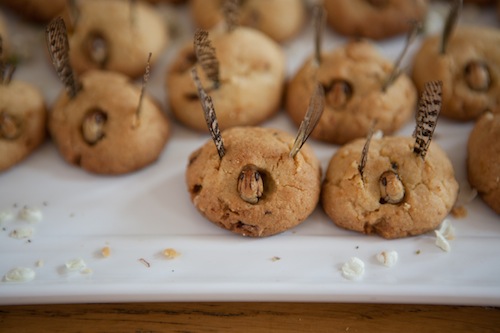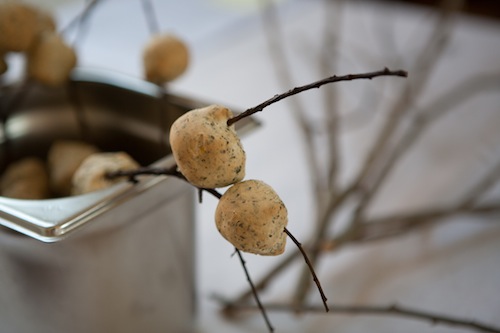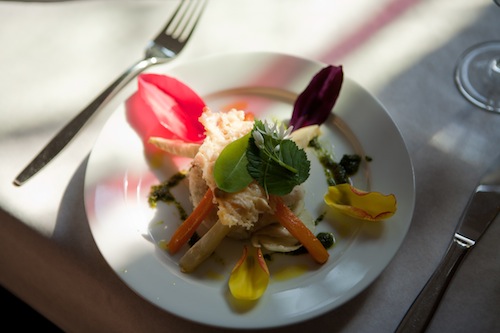Heilige Maag
Baptised grasshopper biscuits. Based on the story of St John the Baptist who lived on grasshoppers and wild honey in his years of exile
Heilige Maag* is an edible journey through the old collection and cloister garden of Centraal museum, Utrecht.
Wietske was invited to inspire and instill the first series of events in 2011 for the new children’s museum within Utrecht’s main art museum. Two young curators, Laila and Vera, translated Wietske’s ideas into the Groene vingers Kinderwerkplaats (Kids’ Green thumb workspace).
The idea is to get to know the museum collection by eating it. Children can chomp their way through some of the most prominent vegetation seen within the museum collection. The plants symbolised in the paintings of Holy virgin as well as the museum’s rich collection of 17th century still lives have been cultivated in the museum’s former convent garden.
A special route has been drawn through the museum for children to trace back the species grown in the garden and that which they have tasted. Rose, tulip, violets, lavender, marigold, poppy, wild fennel, celery, nastrium, daisies and even grasshoppers, frogs and snails will be eaten at special moments throughout the year.
The opening fest took place on 29 of April 2011 where several plants and insects of the 17th century paintings were crafted into several dishes in cooperation with artist-gastronomer Henri Roquas. Read the menu here.
* Heilige maag means Holy stomach instead of Heilige Maagd which translates Holy virgin
Opening fest, ‘Heilige Maag’ in the ‘Refter’ the former monk eating hall, Centraal museum
Lavender, poppy, marigold, lilies and more. The Heilige maag garden, an extension of the museum’s old cloister garden
‘Pastoral aperitif’ a sweet almondy woodruff and daisy syrup served in watering cans
Marigold milk — marigold leaves infused in milk for a rich golden coloured milk. Used to give a golden glow to the bread
‘Stut brood’ devised by Henri Roquas from a tradition in Groningen which gives children little buns of bread baked on willow branches as a symbol of knowledge. The willow and the flowers (marigold, woodruff) used in the bread flower also appear in the still lives.
A dish based on the still life painting by Roelant Saverij: a risotto of sweet tulip stalks and leaves, on a base of celeriac and fennel root doused in lavender fennel, dotted with a sauce of nastrium, chervil, lungwort and other decorative and virgin greens.
Wobbly still life (Upsidedown flower pot violet jelly (made with violet syrup, rose petals and other still life species)


